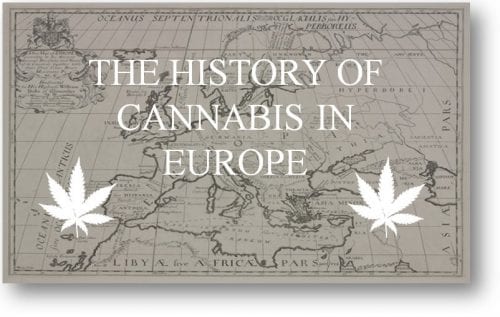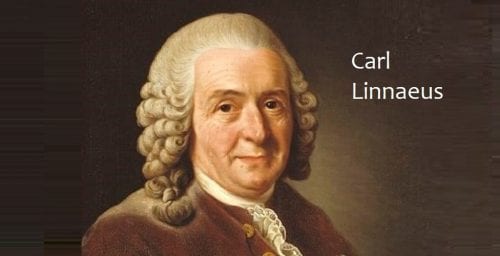The history of cannabis is a great one, and its awareness and applications are developing these days swiftly. Numerous individuals accepted that marijuana originated in Central Asia (in the regions that are currently Mongolia and southern Siberia). But what brings the cannabis in the limelight of European people? To explore the complete cannabis timeline, have a glance at the history of cannabis in Europe.

Cannabis is one of humanity’s oldest cultivated crops. The supplement rich dump sites of prehistoric hunters helped the cannabis plants flourish there as long as 12,000 years ago. Despite this, tracing the weed through history is eventually tricky. However, cannabis was one of the most useful plants on the planet before that point.
The Origins of Cannabis
Contents
Among some of the most exciting cannabis information is the history of the old-fashioned plant. The Chinese adopted both industrial hemp and psychoactive marijuana thousands of years ago. An investigation of Chinese history provides not just a glimpse into the origin of marijuana; it also offers an investigation of the history of medical marijuana.
None of the cannabis plant’s part was trash; they used the root for medicinal purposes and made fabric, paper, and rope from the stems. The leaves and THC-rich flowers, in the interim, were used as intoxicants and as medicines. Cannabis was useful as a surgical anesthetic; Emperor Shen Nung also used them for rheumatism and gout.
Hemp seeds were set out for food and to be crushed for oil. In ancient China, cannabis seeds were used as food grains, and the individuals often filled sacrificial vessels inside tombs with hemp to send friends and family off into the afterlife.
The old Egyptians also used cannabis; historians learned this from deciphering historic scrolls from around 2000 BC. In Egypt, cannabis was useful as a medical treatment for sore eyes and cataracts. Cannabis dust (also known as kief) was also found in Ramses II, perhaps one of the most famous mummies in antiquated Egyptian history.
Around 2000 BC, cannabis showed up in Korea (brought by coastal farmers), and between 2000 BC and 1000 BC, it advanced toward India. It was so revered there that it has a reference in one of the old Sanskrit Vedic poems as denoting one of “the five kingdoms of herbs, which liberate us from ailment problems.”
People were using marijuana for its medical benefits in the Middle East in 700 BC in the Vendidad. An old Persian religious text by Zoroaster (an old Persian prophet) noted the same in his book.
Cannabis Moves Out of Asia

The following section in the history of cannabis complements the Scythians, a group of Eurasian wanderers. They transported cannabis from the Altai mounts into Germany. The Scythians not just utilized marijuana fibers to weave cloths; they also bathed themselves in its aromatic smoke.
The Greek roots of cannabis take the source as right on time as 200 BC. There, it was useful as a solution for edema, ear infection, and inflammation. Around the fifth century, cannabis began appearing in Britain. As people recognized its value, it even showed up as a model in the Grandes Heures, “a book of hours” made around 1505-1508 by Anne of Brittany.
In 1799, marijuana history took a detour to France, where Napoleon introduced it after bringing it once again from Egypt. His troops had discovered hashish after that being unable to find alcohol (because of Egypt being a Muslim country). In Egypt, marijuana had value for its sedative and pain-relieving properties.
The French troops quickly took to the hashish and took a supply of it back home with them. Psychoactive THC-rich marijuana was also an important cash crop in France.
Cannabis Links to the European Countries

Many have sought the roots of cannabis and its utilities in life, whether it’s a green bud from the Netherlands, hash in Afghanistan, or oils made in the USA. Most consumers need to know the source of their products.
While there is a lot of history on cannabis, some are uninformed of its origins. Those that are well-informed may not realize that wild cannabis used to grow within Europe.
When you take a gander at history, it is clear that cannabis has been a critical component of most cultures. It could be medicine, religion, or its ability to be a sustainable clothing and topical alternative. Cannabis has a long history attached back to the old days.
Cannabis History in the UK
Marijuana was also mainstream in the nineteenth century in Europe. It was generally useful for medical purposes in the UK before eventually facing backlash and refusal. Even Queen Victoria used cannabis to mitigate menstrual pain as her doctor prescribed it then.
Marijuana was broadly useful as a medical treatment until the syringe invention in the last part of the 1800s. Because one cannot dissolve or inject cannabis, it became useless, and other faster-acting medications and newer drugs such as aspirin replaced it.
In 1928, the UK officially outlawed marijuana. It came as a result of a 1928 international drug conference held in Geneva. There, an Egyptian delegate set forth a convincing argument that cannabis equaled opium in being a menace to society.
While recreational use continued in the Soho jazz clubs in 1950s London and throughout the flower power time of the 1960s, it did as such under cover of criminality. During the sixties’ flower power years, it also soared in popularity, despite remaining illegal.
Hemp – A Rising Commodity
After the Greeks came the Romans, the physician for the infamous Emperor Nero’s military included cannabis on his medicinal inventories. For the following not many hundred years, things ticked over pleasantly.
Developments in the sowing cultivating and making of hemp witnessed the rise of the number of products, with these commodities’ quality improving over time.
Voyages of Christopher Columbus
Shortly after Columbus arrived in America in 1492, Europe came to know about smoking tobacco in varieties of pipes. Europeans soon started experimenting with ideas to give the tobacco a better flavor and develop the smoking hobby.
One of these trials suggested adding herbs, such as hemp. This plant was modest and promptly available because many firms were cultivating hemp for domestic and industrial purposes.
On the other hand, smoking materials were also available if you knew where to look; for instance, tobacco companies’ stock lists sometimes went on about some hemp.
Growing Hemp Becomes Mandatory
In 1533, King Henry VIII made hemp as a compulsory crop. It required 1/4 of every 60 acres to be set aside for hemp cultivation; otherwise, they had to pay fines. A steady supply of hemp was required predominantly for the construction of the maritime armada.
Products used included hemp oils, fibers essential for creating oakum, rigging, sails, and ensigns. In reality, many ships would never have voyaged if it was not for hemp. Who knows how distinct history might have been without an amazingly versatile cannabis plant!
Hemp Reaches the New World
Less than 100 years after the fact, the colonist of The New World had shown up on these ships and was growing hemp in Virginia. After this plant’s fantastic benefits were acknowledged, it became law for farmers to grow hemp in Virginia, Connecticut, and Massachusetts. They could face prison if they didn’t grow hemp on their land, harking back to the days of Henry VIII.

Even after a hundred years, we see no decline in this plant’s popularity. However, because of the various plants domesticated here and the UK’s atmosphere, there were little or no psychoactive properties. People missed various medicinal opportunities for this and other purposes resulting from the convoluted past of cannabis production.
With the British Empire’s rise in the mid-1800s, more doctors, scientists, botanists, and herbalists traveled the globe. They were expanding the domain and encountering new societies. These civilizations were cultivating cannabis for the two its medicinal and intoxicating potential.
Cannabis Popularity Rules, Restrictions, and Prohibition
Through the last part of the 1800s, cannabis usage in Europe started to rise. The various European dealing routes, unions, and colonies ensured that cannabis usage spread quickly from one country to another. Marijuana seeds were simple to transport and grow in new places.
After the first season, there would always be a second. And so weed spread from Europe to Latin America and a long way past. A considerable lot of the first individuals to advocate the use of cannabis were doctors, explorers, and influential authors. But as cannabis culture began to spread, artisans and slaves were frequently enjoying it.
It indicated that the authorities were quick to brace down and restrict use. Throughout the last part of the 1800s and early-mid 1900s, superiors introduced various forms of prohibition. Quite a bit of this legislation came for preventing African/Indian/Asian workers from using cannabis.
Sir William Brooke O’Shaughnessy and Medical Marijuana

William Brooke O’Shaughnessy was a young Irish surgeon. Somewhere between 1833 and 1841, O’Shaughnessy voyaged India largely, researching numerous natural plants’ therapeutic characteristics, cannabis being one of them.
Moreover, he almost immediately noticed its therapeutic qualities. He also became mindful that the indigenous individuals had been using cannabis for medicinal and recreational purposes for thousands of years.
From Experimentation on Animals to Usage on Humans
Eager to test the locals’ claims, he began experimenting, initially on animals, then having acknowledged how safe cannabis was, humans. He uncovered these experiments on the preparation of the Indian hemp, their effects on health, and theirs efficacy in tetanus six and other convulsive ailments.
O’Shaughnessy’s research was groundbreaking, and his impact on modern-day use of CBD is enormous. He was successful in preventing muscle spasms in a tetanus patient. He also ended febrile seizures in an infant kid. Though he had only inadequate success in handling other ailments, the calming and pain relief effects were visible.
The Use of Cannabis Tinctures
On his arrival to London in 1841, O’Shaughnessy took back not just his research articles but also cannabis and its seeds. They gave it to groups such as the Royal Botanical Gardens and the Royal Pharmaceutical Society.

It was about this time he got familiarized with a pharmacologist named Peter Squires. Mutually, they made a wide array of cannabis tinctures that were available at local drugstores. When Queen Victoria’s physician (Sir Russel Reynolds) got alert of O’Shaughnessy’s research, he prescribed her majesty’s the tinctures for menstrual cramps’. He also began favoring the application of cannabis for medicinal objectives.
His tinctures – and numerous other products besides – were generally available and very famous from around 1840 to mid-1900 when we perceive the age of cannabis prohibition crawling in. Overall, O’Shaughnessy has had a quite noteworthy influence on the progression of the history of cannabis.
CBD Research on The Rise
The CBD products we realize today differ vastly from those of yesteryear. Most notably, THC’s psychoactive property within the plant is negligible in modern medicine and supplements. It is because of the work of Dr. Roger Adams.
At the University of Illinois in 1940, he discovered and isolated CBD, one of over a hundred cannabinoids. However, it would take over 20 years of research, which was also accountable for identifying THC, to make progress.
The Revelation of Relationship Between THC and Psychotropic Effects
Another young doctor in 1963, Dr. Raphael Mechoulam, successfully uncovered the direct relationship between the THC and the euphoric effects. Nowadays, we can isolate and identify numerous cannabinoids. We also have a better knowledge of their properties and applications.
Research Roll on Relentlessly
Although research is (as always) underway, what we know is irrefutably noteworthy, having this wonder plant for thousands of years, we have utilized it to make papers, bioplastics, ropes, edibles, and much more!
We have utilized it in cooking, for recreational purposes, and therapeutic purposes. We have used it as a medicine to treat and provide help from numerous ailments, often with impressive success rates.
The Awareness of The Uses of Cannabis
The cannabis plant has undoubtedly had an integral influence on the development of humankind. There has been a worldwide acceleration in its application, growing methods, ways of cultivation, and the production of cannabis Sativa. Moreover, it’s easy to see why over 50,000 businesses use marijuana in some ways.
Nowadays, the stigma surrounding this plant is growing. It’s evident that people around the globe also recognize its medicinal benefits. Our expertise to isolate and recognize certain cannabinoids to improve health and the promising research has expanded the knowledge of its contents.
Throughout the history of cannabis, humanity has been experimenting and making discoveries about this amazing spice. Presently, there’s a fascinating chance to work on hemp products and CBD oil. We are revealing even more that it has to contribute and making it accessible to the general users.
The Studies Related to Cannabis in Europe
Berlin Free University
A team at the Berlin Free University led a study on “Cannabis Plants throughout History.” They published their results in the agricultural diary: Vegetation History and Archaeobotany. And as per the study, the plant surfaced approaching the time of the ice age.
Also, researchers accepted this as an origin of “modern strains.” The study showed that newly evolved shipping lanes were how cannabis cleared its path through Europe and Asian continents.
The University of Vermont
Researchers from the University of Vermont led a study to figure out more information on cannabis vegetation’s pre-progress. They sampled dust gathered from fossils in the Stone Age. Besides, they were found throughout 470 European locations and examined. It was one of the most common widespread researches for the plant.
Furthermore, it allowed the researchers to see what kind of atmosphere is suitable to grow particular strains. To their surprise, they found cannabis. A ton of this proof shows that cannabis advanced throughout Europe and into Asia. But with the ever-changing human contamination and atmosphere, the plants began to disappear.
The Yamnaya Tribe
The Yamnaya individuals are highly significant to the wild cannabis within old Europe. This ancient race, known to Europe, may have been responsible for marijuana, making its way through European lands. Reaching from Kazakhstan to the Caspian Sea, the Yamnaya tribe was the preeminent force behind European cannabis sources.
This group may have even mass-produced cannabis for medical purposes as long as 5000 years ago. And even though the connection between Europe’s old cannabis history and the Yamnaya individuals may just be a theory, the proof points strongly to them being a key component in migration and sale of cannabis.
Wild Cannabis in Ancient Europe

Overall, the antiquated history of cannabis has numerous origins with several theories. Many accept that the proper roots originated from Asian lands in the BC (before Christ) period. Still, people had cultivated it everywhere for medical objectives. After all, ancient Europe has an essential role in making the rich history of cannabis.
While it might look like we are still in the Dark Ages, it is essential to understand where history begins and where it is heading. Furthermore, the stigmas are slowly breaking endlessly, and the beginning of cannabis will come back again.
Mid-twentieth Century — The War on Drugs Begins
As the usage of marijuana started to intensify between 1950 to 1970, concerned authorities began to clip down massively on cannabis. The United Nations pushed from the front, with various representatives targeting marijuana and those that enjoyed using it.
Perhaps the misplaced illegality made some individuals more interested in cannabis. But one lesson from the UN hostile to cannabis conventions is that they simply didn’t work.
Cannabis use detonated from the 1960s onwards in Europe and the rest of the world. Individuals didn’t appreciate others’ concerns in their leisure time, and they certainly didn’t care for other people’s judgments.
Progression and Medical Uses
Numerous Europeans felt that the restrictions on cannabis use were inappropriate over-reaction from the caretaker state. But the ban wasn’t working for one reason – individuals enjoyed the plant and didn’t care for others telling them not to do it.
In 1972 the Dutch Government started differentiating among dangerous and less dangerous drugs. Tolerance had shown up, and the coffee shops began supplying personal amounts of cannabis to citizens (and a lot of tourists).
Millions of Europeans were currently safely enjoying cannabis. They didn’t accept the counter cannabis propaganda from their Governments and still don’t. And what’s more, a considerable lot of the new cannabis users were reporting some profound observations. They claimed that cannabis had some astounding properties for diseased people.
The Acknowledgment That Cannabis Has Medical Benefits
Claims of therapeutic applications for marijuana were not taken seriously for some years. The UK just legalized medical cannabis in 2018, and even then didn’t do an especially good activity if it. The counter cannabis propaganda had sunk in and wasn’t easy to undo.
However, medical cannabis quickly turned into a hotly debated issue in places such as the USA and was legalized in California in 1994. The proof was easy to shove aside but impossible to ignore totally. As medical cannabis use gained traction, open interest and usage rates continued to increase.
Hostile to cannabis rules and regulations began to look increasingly tenuous and wrongly considered. Cannabis varieties rich in CBD further strengthened the medical case for cannabis use. Companies like Dutch Passion are also looking into selective breeding to advance cannabis varieties with some minor cannabinoids, which may open new medical possibilities.
The Use of Cannabis in Modern Times
The history of cannabis is a long and puzzling one, but the plant has recently emerged from the darkness. With legalization in developing places, people are again savoring the recreational and medical advantages of the plant.
Some countries, like the Netherlands, have decriminalized marijuana possession in coffee shops! Apart from that, in 2001, Portugal was the first European country to remove criminal penalties for personal possession of cannabis.
Canada legalized marijuana in 2018 for recreational purposes, and a growing number of US states have legalized its use. Numerous strong laws remain in place, especially for the cultivation and distribution of cannabis in all its forms.
Punishments in some countries range from cautions to fines and even prison sentences in some cases. Still, the final part in the book of marijuana history seems to be one of increasing legalization, with the final pages still unknown.
The Future of Cannabis in Europe
History shows us that medical cannabis tends to lead the way. When medical cannabis became legal, political dread diminishes, and they can discuss recreational cannabis with less hysteria. Such a significant number of US states’ decisions, with Canada and Uruguay to legalize cannabis, show Europe’s probable arrival.
The following decade or so should see the first European countries legalize recreational cannabis. Europe may also soon see legal, business cannabis cultivation for both medical and recreational users.
In a Nutshell
Cannabis and its advancement in the course of the last 10,000 years have played a considerably more critical job in our history than most people would ever presume.
After a century of lurking in the shadows, cannabis can be a reformed topic of discussion. The old stigmas are drifting apart as people look back at the plant’s origins and notice that it has always been an accessory of progress, spirituality, and happiness.
In this desperate world that is always striving for new resources, it’s only by following the path that cannabis has already explored that we will ever recognize where it may guide us.

